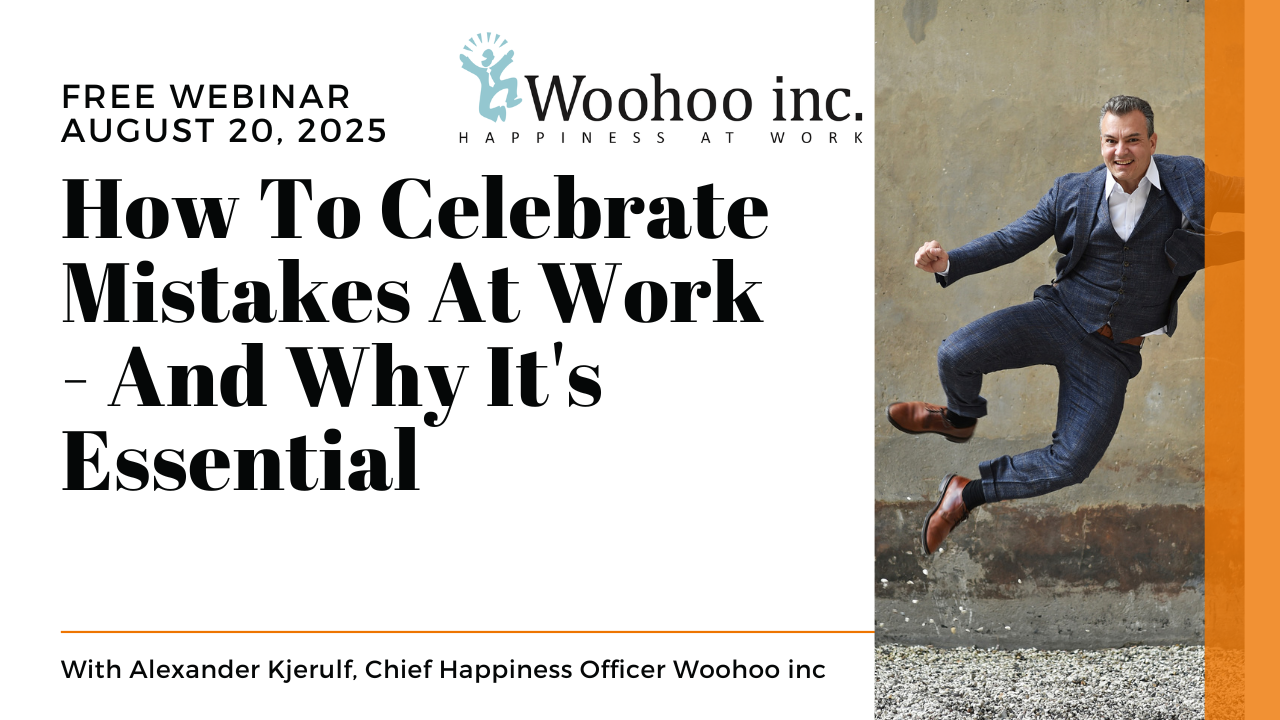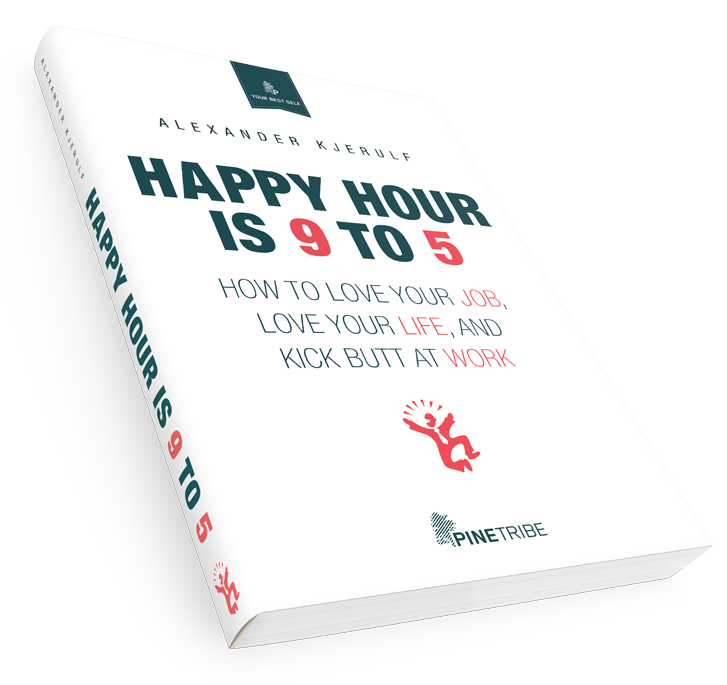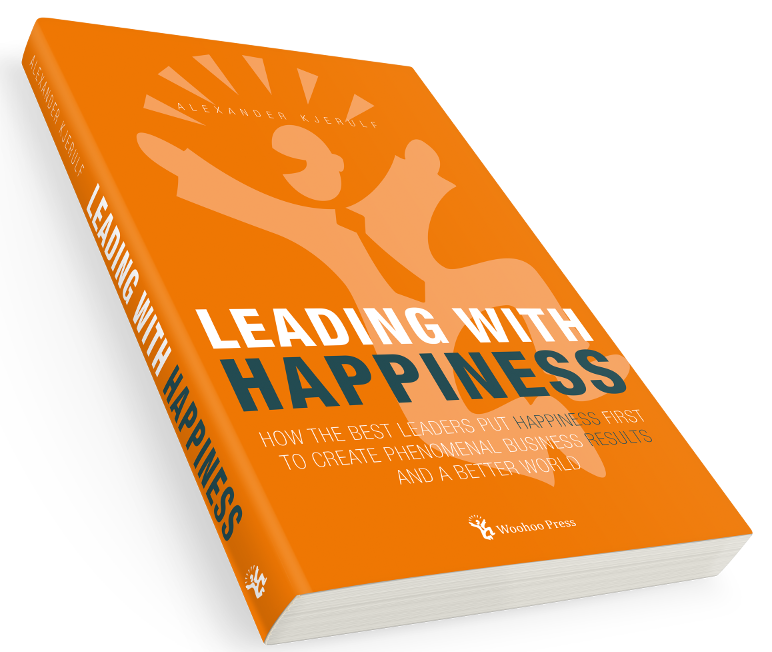If an organization is narrow in the images that it directs toward its own actions, then when it examines what it has said, it will see only bland displays. This means in turn that the organization won’t be able to make much interesting sense of what’s going on or of its place in it. That’s not a trivial outcome, because the kind of sense that an organization makes of its thoughts and of itself has an effect on its ability to deal with change. An organization that continually sees itself in novel images, images that are permeated with diverse skills and sensitivities, thereby is equipped to deal with altered surroundings when they appear.
– Karl Weick
-
Quote
-
10.000 people watching
Yesterday we had the annual Ecco Walkathon in Copenhagen, an event where people can sign up to take a walk for charity. They walk 6, 10 or 15 km. and for every km, every person walks Ecco (shoe maker) donates 5 kr. (a little under a dollar) to a charity of their choice. It’s a wonderful combination of exercise, party and charity drawing in around 20.000 people.
And Maria Hartung (a fellow instructor from the SATS fitness chain) and I volunteered to do the warm-up. For 10 minutes. Twice. In front of 10.000 people each time.
Let me tell you: I was nervous. I teach aerobics three times a week to 20-30 people. I’ve performed shows in front of 200-300. But this was a couple of orders of magnitude larger. So going on stage was a challenge. And a blast. MAN it rocks, being on stage in front of such a large audience.
The first time we went on, I snapped a picture, so this is what 10.000 people look like from the stage and this is what it looked like from the crowd.
Being up there, the buzz is incredible, the adrenaline pumps and you get this enormous rush. I want to be a rock star in my next life :o) But most of all, I want that large an audience again. Soon.
-
1000 movies
I have now rated 1000 movies on imdb. That site probably knows more about my movie preferences than I do :o)

-
Bacteria are open source
The traditional view of evolution says that genes are passed along from ancestor to offspring. This view is currently being expanded to include horizontal gene transfer.
Horizontal gene transfer is any process in which an organism transfers genetic material (i.e. DNA) to another cell that is not its offspring. By contrast, vertical transfer occurs when an organism receives genetic material from its ancestor, e.g. its parent or a species from which it evolved. Most thinking in genetics has focussed on the more prevalent vertical transfer, but there is a recent awareness that horizontal gene transfer is a significant phenomenon.
Horizontal gene transfer is common among bacteria, even very distantly-related ones. For example, this process is thought to be a significant cause of increased drug resistance; when one bacterial cell acquires resistance, it can quickly transfer the resistance genes to many species.
Who knew that bacterie were open source :o)
Why is this interesting? It provides yet another example of cooperation in nature – yet another reason to believe that nature does not favour the strong, tough and ruthless, that quite to the contrary, nature favours those who can and do cooperate.
And so does the business world.
-
Quote
The opposite of a correct statement is a false statement. But the opposite of a profound truth may well be another profound truth.
-
Naked Google
Here’s another great example of a naked business practice: How a business’ website shows up in a Google search can be crucial. Being on the first search results page is gold, finding yourself relegated to the back pages may cost you customers. Consequently, many people try to improve their Google ranking by means that can be fair or … shady, let’s say.
And what does Google do with these people who seek to unfairly exploit their system? They invite them to a party!
Google works hard to thwart the mischief makers, sometimes branded as “Black Hats” because of their subterfuge. Engineers frequently tweak the algorithms that determine the rankings, sometimes causing websites perched at the top to fall a few notches or, worse, even plunge to the back pages of the results.
Hoping to ease the tensions with webmasters, Google hatched the idea of its “dance” party during an annual search engine convention held in Silicon Valley, just a few miles from Google’s headquarters. The company invited some of the Black Hats, effectively welcoming the foxes into the hen house.
“Google realized it was never going to get rid of these (Black Hats), so it decided it may as well work with them,” Chris Winfield, a Google Dance party veteran who runs 10e20, a search engine marketing firm. “Until then, it always seemed like it was ‘us against them.’”
The guests have mostly behaved themselves, although a couple years ago there was an unsuccessful attempt to steal one of Google’s couches.
Just like the example at Amazon that I blogged previously, this open approach to business is efficient, positive and speaks of a high level of organizational maturity – which is especially impressive in the case of a young company like Google. Kudos!
-
Steve-olution
There is currently a rather active movement in the US that seeks to find fault with evolution and to promote creationism or the newest version of it, Intelligent design. One of the arguments often used, is that more and more scientists are coming to doubt evolution. This is probably not true, and the National Center for Science Education came up with a wonderful, wacky response. Eugenie Scott of the NCSE put it like this in an interview:
Well, you know, we were bombarded by irritated and irate scientists who said we could get 100,000 scientists in two weeks to sign a statement on evolution, let’s counter this nonsense. And we kept saying no, that’s not the way science is done; we don’t want to further mislead the public; you don’t do science by plebiscite, this is really silly. But on the other hand, we then got to thinking about the great American journalist H L Menkin who once said that, a good horse laugh is worth 1000 syllogisms, and we’re pretty big on the syllogisms. You go to our web page we’ve got straight science, we’re a serious organisation – but damn it, we’re tired of this.
They went for the horse laugh, hence Project Steve. You can get on the Project Steve list only if you’re a scientist, your name is Steve (or a variation thereof) and you agree with the following:
Evolution is a vital, well-supported, unifying principle of the biological sciences, and the scientific evidence is overwhelmingly in favor of the idea that all living things share a common ancestry. Although there are legitimate debates about the patterns and processes of evolution, there is no serious scientific doubt that evolution occurred or that natural selection is a major mechanism in its occurrence. It is scientifically inappropriate and pedagogically irresponsible for creationist pseudoscience, including but not limited to “intelligent design,” to be introduced into the science curricula of our nation’s public schools.
So far they’re way past 500 Steves. The name Steve represents about 1% of all scientists and was chosen in honour of the late Stephen Jay Gould.
-
Beating the banks
Zopa is a new approach to lending and borrowing money:
Here’s the way the world works (and it must be right because it’s been like this for hundreds of years…)
People who have spare money give it to a bank. Banks then do whatever they like with it. Some of it they lend to people who need to borrow. Some of it they give to their shareholders. Some of it they gamble on the price of tin, or the dollar going down, or whether there’ll be floods in Asia. Banks make lots of money from all this, a fraction of which they give back to their customers.
Zopa though lets people who have spare money to lend it directly to people, like them, who want to borrow it. No bank in the middle, no huge overheads, no unethical investments.
To minimise any risk, the money each lender puts in is spread amongst at least 50 borrowers (and likewise each borrower gets their money from a number of different lenders).
I saw this mentioned on Businesspundit, and I have to agree with him that this is a seriously disruptive technology. The site just exudes happiness, energy, drive, disruption and fun. Check it out.
UPDATE: I tried to register at the site, and the process failed. I got this very nice email from the site:
Thanks for your email and your interest in Zopa. I’m sorry but in order to comply with UK Money Laundering Regulations all Zopa Members need to be UK residents and appear on the voters roll.
We know this sounds incredibly inflexible, but at this stage in Zopa’s young life we have to be belt and braces with identification, money laundering and fraud.
Clearly this is a big turn off for you so please accept our apologies. Once we’re better established we’ll be looking to increase the number of ways that we can admit Zopa joiners online.
As Zopa grows we are planning to move into other countries by the end of the year and we hope very much that you’ll consider trying to join us again then.
I’ll be back when they take it outside the UK.
-
Quote
What is at the center now? At the moment, neither art nor science but mankind determining, in confusion and obscurity, whether it will endure or go under. The whole species – everybody – has gotten into the act. At such a time it is essential to lighten ourselves, to dump encumbrances, including the encumbrances of education and all organized platitudes, to make judgments of our own, to perform acts of our own.
– Saul Bellow, from his 1976 Nobel lecture.
-
Hacking Las Vegas
A group of “baby-faced MIT students, hyper-geniuses and anarchistic whiz kids” figured out how to cheat casinos efficiently at blackjack.
Fifty thousand dollars strapped to each thigh. A hundred thousand dollars, in 10 bricks of hundreds, taped across my upper back. Fifty thousand more Velcroed to my chest.
I try to control my breathing as I stroll through Logan International Airport. Terminal C is buzzing and chaotic, an over-air-conditioned hive of college students escaping Boston for a long weekend. I am dressed like everyone else: baggy jeans, baseball hat, scuffed sneakers. But in my mind, I have as much chance of blending in as a radioactive circus clown. There’s enough money hidden under my clothes to buy a two-bedroom condo. And to top it off, there’s $100,000 worth of yellow plastic casino chips jammed into the backpack slung over my right shoulder.
I think it’s nice to see students putting the stuff they learn into practice :o) Read the entire article on Wired.





